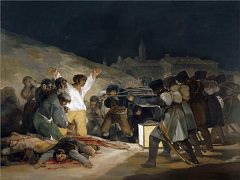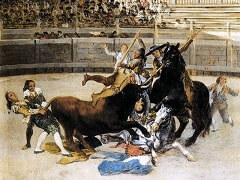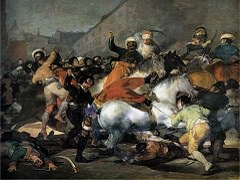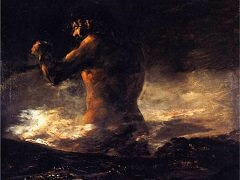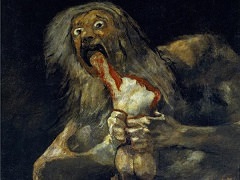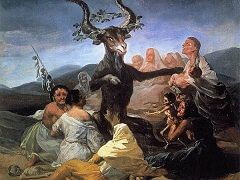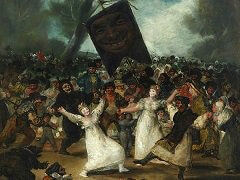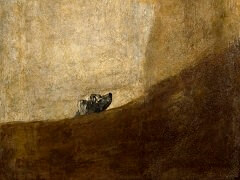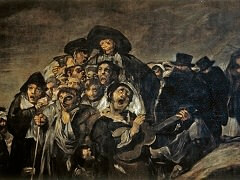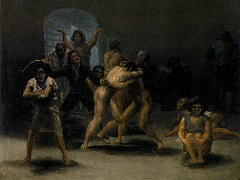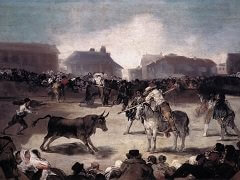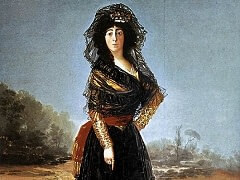Naked Maja, 1797-1800 by Francisco Goya
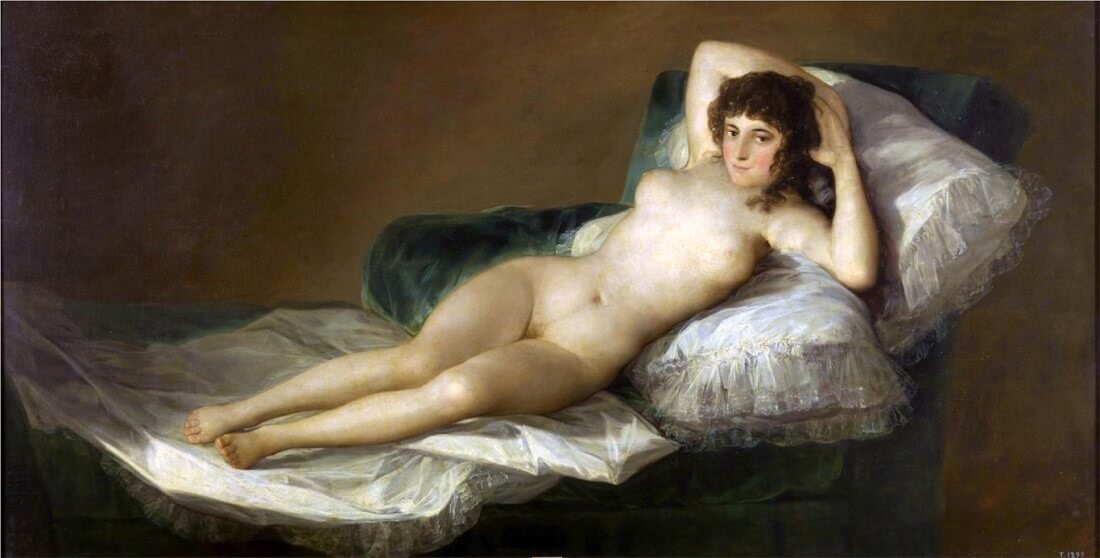
On 16 March 1815 the tribunal of the Inquisition issued a subpoena for Goy appear, "that he might acknowledge and declare the works to be his, why he created them, at whose request and to what end." The questions posed to the Aragonese painter concerned two enigmatic paintings: Naked Maja (Maja Desnuda) and the Clothed Maja. His reply, if any, remains unknown.
Though the canvases have aroused the curiosity of numerous scholars, the Inquisition's questions remain unanswered since the early nineteenth century We do not know who commissioned the paintings. Research focused first or the duchess of Alba, who had presented to Manuel Godoy, for his private study, Rokeby Venus of Diego Velazquez as well as a sixteenth-century Italian school Venus. It was there that Pedro Gonzalez de Sepulveda saw the Maja Desnuda in 1800. If true, such an account supports arguments that the duchess herself served as the model, and that, as Viardot suggested in 1843, she ordered the head altered to conceal her identity. More recent investigations incline toward the Prince Peace (Godoy) himself as patron: Goya had developed a most productive artistic relationship with him at the time. Baticle proposes Pepita Tudo, Godoy's mistress, as the most likely model, claiming that her head was refashioned in 1797, when Godoy wed the countess of Chinchon.
What is certain is that the Maja Desnuda was painted before 1800, since Sepulveda's commentary gives us the date ante quern. It was hidden in Godo private study, along with the duchess of Alba's two generous gifts. The Maja vestida was added shortly thereafter and is mentioned in Frederic Quilliet's 1808 inventory.
It is commonly alleged that Goya sought to create companion paintings, either in the style of Titian, whose Venus and Adonis complements the Dana when the two are placed face to face, or along the lines of Juan Carreno's Monstruas (Museo Nacional del Prado, Madrid), naked and clothed. Although the Maja Vestida is smaller, it was meant to providealmost literally"closure" for the earlier painting." Various models are advanced as Goya's source inspiration: the two Venuses from the same private study, whether Diego Velazque; (Harris), the Titian copy (Tomlinson). But to grasp Goya's genius we need only note the novel concept of female nude he had assumed. Goya jettisons "excuses" for the nude: his model is not asleep, nor does she feign ignorance about being observed. Quite the contrary. She exposes herself without modesty, her arms behind her head, her pubis the center of the composition. Guests in Godoy's private study hailed as the most lofty incarnation of female beauty; subsequent centuries have acclaimed her as the prototype of Spanish womanhood.
Sepulveda criticized the Maja Desnuda, rather unjustly, as "a work devoid draftsmanship and clumsy in coloration." But the academic engraver was doubtless shocked by so shameless a display of the human body. A more objtive assessment would stress Goya's great mastery of human anatomy, clearly observable in his full-figure nude studies from life, or earlier, in the perfect balanced Christ on the Cross (Museo Nacional del Prado, Madrid), the painl that gained him admittance to the Real Academia de Bellas Artes de San Fernando in 1780. Goya's skill is obvious in this painting, as well as in the Maja vestida, where the play of cold light and subtle shadow shape the figure with absolute assurance. The maja reclines on a green velvet sofa, covered by a sheet and a pillow adorned with lace, astonishing in its delicate transpareni and tonal gradation. The pallor and chill of the lighting and the chosen rai of color, her positioning, and her level of exposure to the viewer all recall the Ariadnes of classical sculpture. But this Ariadne is awake, and fixes her gaze directly on the observer, thus transforming the encounter between them in an erotic occasion,

